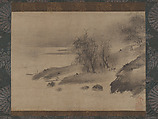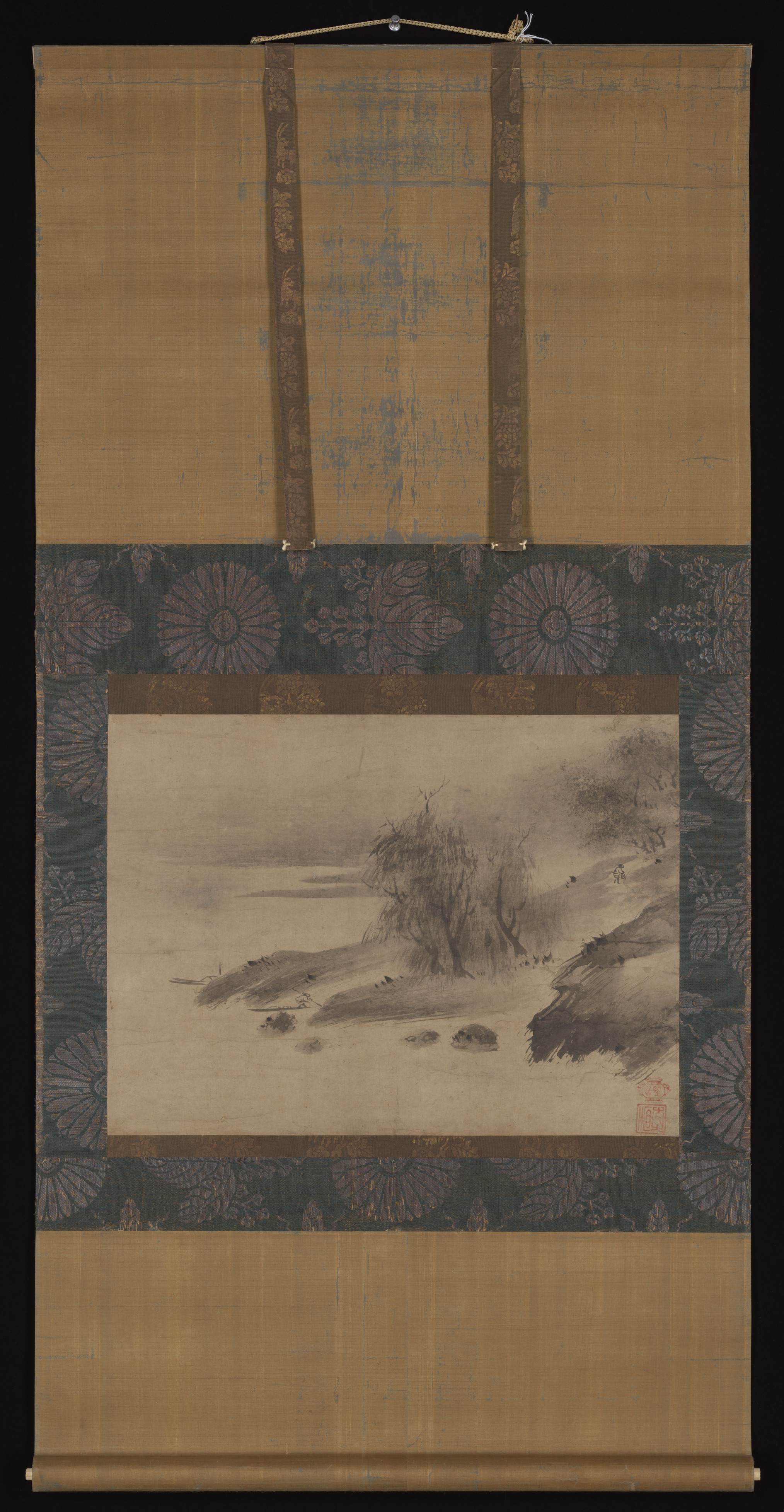Landscape
Attributed to Sōami Japanese
Not on view
This freely-executed ink landscape painting, rendered in soft, washy brush strokes and light wash to produce a misty, moisture-laden atmosphere, depicts a hillside sloping towards a body of water and a small figure walking along a path in the direction of a distant stand of trees. Several willows grow near the water’s edge, on a low promontory. Two boats are visible along the grassy shoreline, one of which is being poled away from shore by a solitary boatman.
Sōami was one of the most important artists of late fifteenth–early sixteenth century Japan. One of the three influential “Ami school” painters—the other two were Nōami (1397–1471) and Geiami (1431–1485)—he served as art connoisseur and consultant to the Ashikaga shoguns and was familiar with the works of art they imported from China. His own painting style was inspired by the soft, misty brush technique associated with the Song-dynasty Chinese Chan (Zen) monk-painter Muqi Fachang (active ca. 1250–80), whose works were highly prized and widely collected in medieval Japan.
Due to rights restrictions, this image cannot be enlarged, viewed at full screen, or downloaded.
This artwork is meant to be viewed from right to left. Scroll left to view more.



